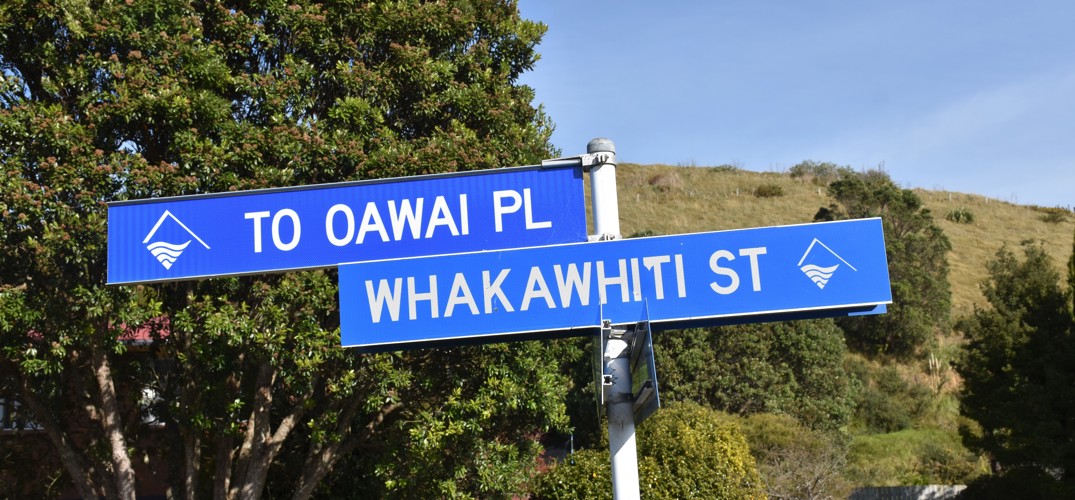 Whakawhitit Street sign (2020). Mike Gooch. Word on the Street image collection.
Whakawhitit Street sign (2020). Mike Gooch. Word on the Street image collection.
 Whakawhitit Street sign (2020). Mike Gooch. Word on the Street image collection.
Whakawhitit Street sign (2020). Mike Gooch. Word on the Street image collection.
Whakawhitiwhiti pā has a commanding presence in the west of New Plymouth. With its well-defined earthworks it is one of the best preserved of New Plymouth's few remaining pā sites.
Relatively little is known about the pā, although it's thought to date from a turbulent period in the 1700s when the boundary of the Taranaki and Te Āti Awa tribes alternated between Paritutu and the Waiwhakaiho River. Whakawhitiwhiti is the most significant of a series of defensive pā constructed by Taranaki iwi after they had occupied Te Ātiawa territory. By about 1770 it appears that Taranaki were prepared to abandon their hold on the area and return peaceably to their original territory.
The area was subdivided in the early 1960s by Pepper Construction Limited and it was their idea to name one of the roads after the adjacent pā. The abbreviated name was suggested as there had once been a post office on the corner of Ōmatā Road that was known as Whakawhiti. The post office, located in Birmingham's store on the corner of Tukapa and Ōmatā Roads, opened on 24 August 1911 and closed six years later in 1917.
As New Plymouth grew rapidly in the post-war years many pā sites were destroyed or badly damaged. In the mid 1970s, as development on the Poplar Grove subdivision progressed, concern was raised that the destruction of Whakawhitiwhiti pā was inevitable. Almost single handedly, local man Mr Frank Fahy campaigned to save the historic site.
As a result, the pā and its surrounds were acquired by the New Plymouth District Council in two separate lots, the first in 1977 and the second in 1988. The site is now known as the Whakawhitiwhiti Pā Historic Reserve, with several access points, and it offers excellent views of the city.
This story was originally published in the Taranaki Daily News.
Please do not reproduce these images without permission from Puke Ariki.
Contact us for more information or you can order images online here.